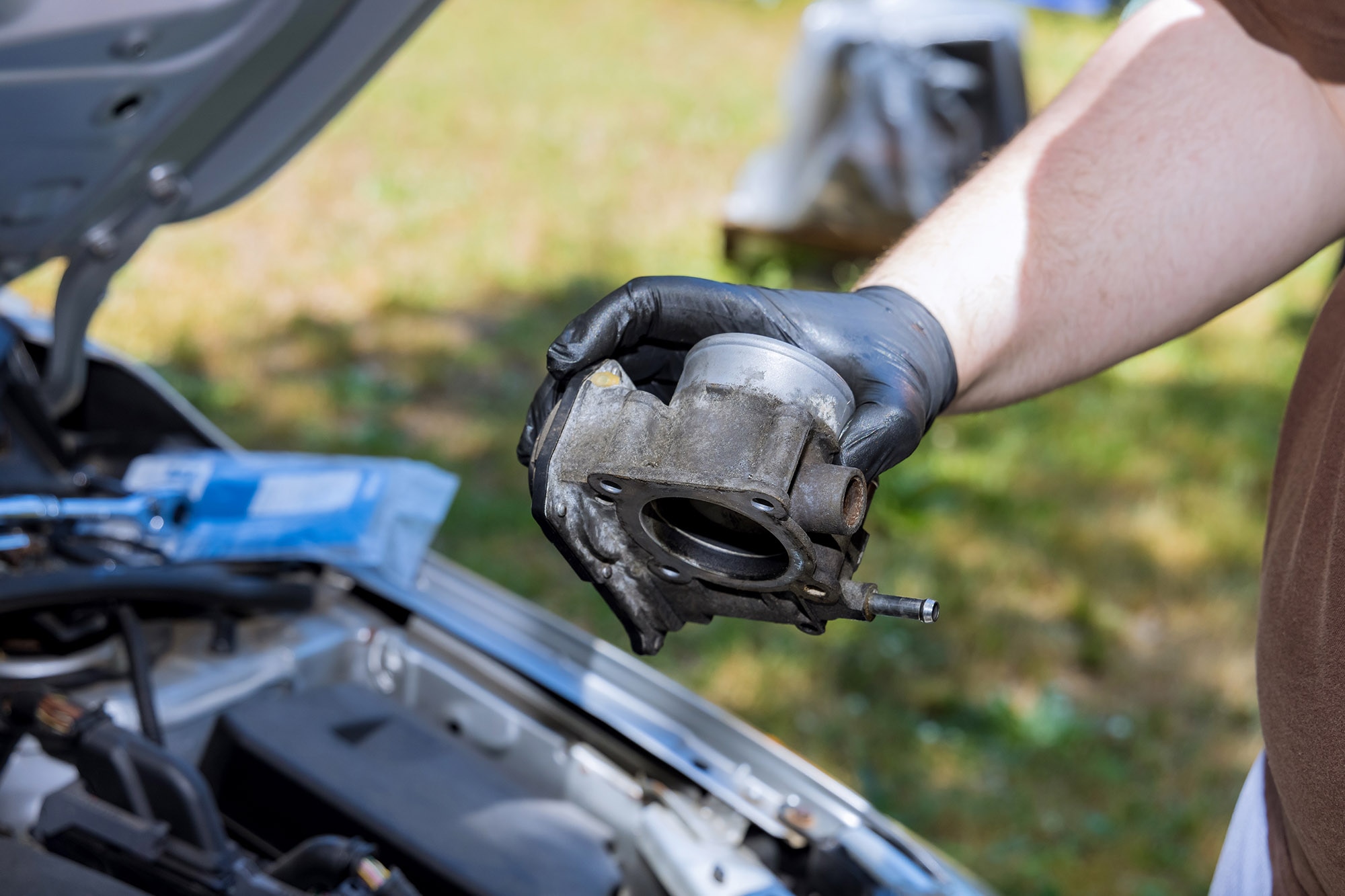How a Throttle Body Works
This part directs how much air goes into a fuel-injected gas-powered engine.
 Getty Images
Getty Images
A throttle body is the component that regulates the flow of air into the engine. Ultimately, this flow of air determines how much power the engine produces. Diesel engines manage power production by regulating the flow of fuel and do not have a throttle body.
The Role Air Plays in Internal Combustion
Like a fireplace, a gasoline engine needs the right amount of air for ignition to happen. When an engine is running, it sucks in air through a tube called the intake.
With the help of a few sensors, cars adjust the amount of fuel being injected to match the amount of air in an ideal ratio. Just enough of everything keeps the fire going, and not enough of either can result in the engine running poorly or not at all.
The amount of power the engine makes is adjusted by altering the amount of air it receives. More air means the engine can burn more fuel and create more power. Less air means less gasoline burned, therefore less power.
How a Throttle Body Works
The amount of air going into the engine is controlled by a valve inside the throttle body. In most gas-powered cars, this valve is a simple metal disc that pivots on a shaft through its middle. This is sometimes called a butterfly valve, as it slightly resembles the body and wings of a butterfly.
This valve is essentially a door for air. When the throttle is closed, no air can pass, and the engine can't run. The more the accelerator is pressed, the wider the butterfly opens. With more airflow, the engine can burn more fuel and thus produce more power.
If the throttle valve is the door for air, the throttle body is the doorframe. It supports the shaft of the throttle valve and controls its operation.
The butterfly valve opens and closes based on how far the accelerator pedal is pressed. Early fuel-injected cars have a cable connecting the gas pedal to the throttle body that mechanically pulls the butterfly valve open. On modern vehicles, a sensor measures the position of the accelerator pedal. This sensor sends an electronic signal to the throttle body, where a tiny electric motor opens and closes the butterfly valve.
Sensors on the throttle body measure the position of the accelerator and the airflow to calculate the proper amount of fuel to send into the engine.
Written by humans.
Edited by humans.
 Bob Sorokanich
Bob SorokanichBob Sorokanich is a car-obsessed journalist and editor who manages to maintain an old Mini Cooper and a love affair with automobiles while living in New York City. When he's not thinking about cars, he's riding his motorcycle, and when he's not riding his motorcycle, he's anticipating his next joy ride.
Related articles
View more related articles